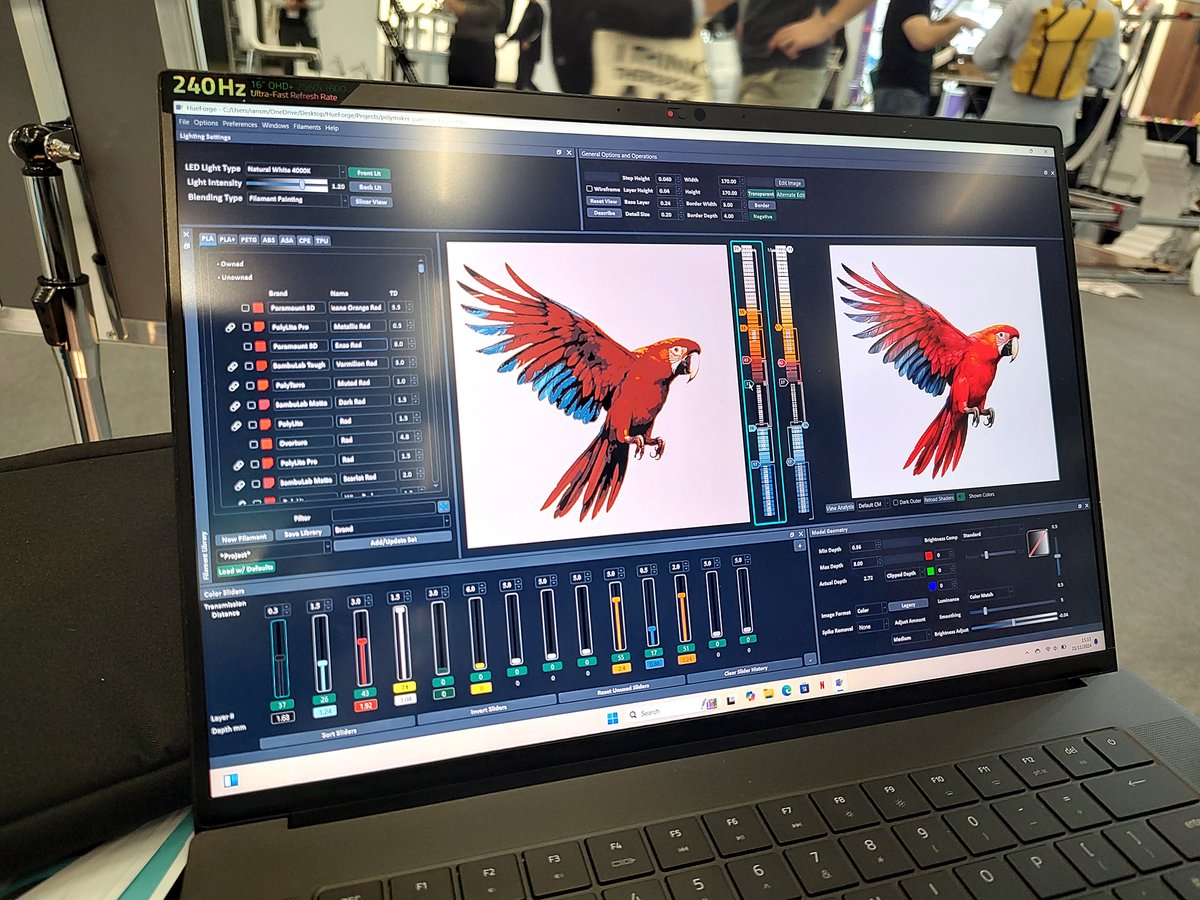HueForge’s 0.80 “Color Match” update was released in late November, adding new features that make blending filament colors to reproduce source images with HueForge “filament painting” significantly easier.
In previous iterations, the position of filament colors in a HueForge model’s layering was somewhat governed by software color detection. Similar colors, like certain shades of red, yellow, and green, could be detected as the same color – almost like the software was colorblind. Color Match’s addition of a “mesh core” allows users to manually edit a mesh and correct for these colors to achieve a more accurate image recreation.
“It just gives you far much more control over the actual geometry of the model,” Ian Smalley, HueForge co-creator, told All3DP.
Stephen Lavedas, HueForge’s maintainer, later added that the ability to manually group colors in the mesh has been a much-requested feature by HueForge users “Color Match gives them the ability to define how they want colors to layer,” he said.

In addition to manually editing a mesh, users can now drag and drop colors from a source image to create a sort of draft image with exact colors and see how they’ll blend with a user’s custom mesh before fitting their model with filament colors available in their library.
The whole process seems to make the workflow of blending filament colors with HueForge much more efficient, and allows for ambitious reproductions that experienced users like Smalley say were exceedingly difficult – or even impossible – in previous versions.
HueForge was part of Polymaker’s booth at this past Formnext, demonstrating what Color Match is capable of with Polymaker’s Panchroma line of 160 filaments by reproducing classic works of art like Andy Warhol’s Marilyn Diptych, Van Gogh’s Self Portrait with Bandaged Ear, and Da Vinci’s Mona Lisa. The works were then part of a SMRRF charity auction, selling for approximately £925, £390, and £280, respectively.


For a 3D printing application that makes what is, on the surface, 2D images, HueForge is a remarkably complex piece of kit. It’s only growing in popularity, with a user base that its creators say has surpassed 50,000.
If you’re curious about how HueForge works, a good place to acquaint yourself is Laveda’s YouTube channel, HueForging, or NeoKoi Prints, which has been sharing videos about HueForge Color Match since its beta several months ago. Or, head over to HueForge’s website to give the software a spin.
Read more recent news:
License: The text of "HueForge’s Color Match Update Makes Colors Mesh" by All3DP is licensed under a Creative Commons Attribution 4.0 International License.
 Stay Informed, Save Big, Make More
Stay Informed, Save Big, Make More